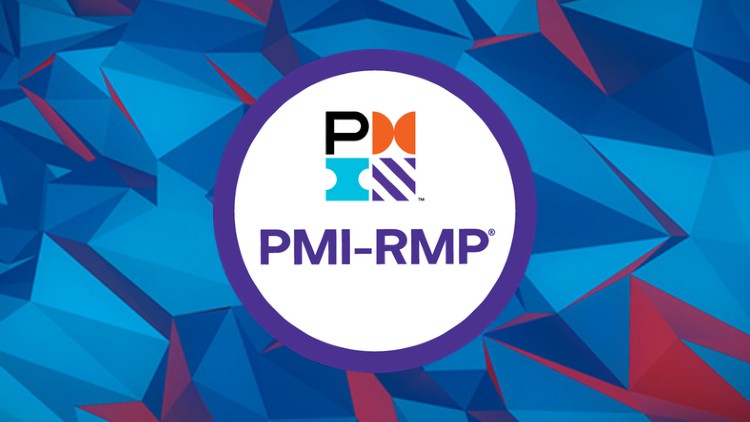
Here we go!!
What you will learn
You are here to learn about PMI PMI-RMP
You are here to prove yourself in PMI PMI-RMP
You are here to get certified PMI PMI-RMP
You are here to get benefit from PMI PMI-RMP
Description
This course contains two real PMI Risk Management Professional “PMI-RMP” exams which were created based on The Standard for Risk Management in Portfolios, Programs, and Projects and PMBOK6&7.
The practice exams included different examples of each type of the commonly found questions on the PMI-RMP Exam.
This course of the “PMI-RMP” Real practice exams is the best way for the PMI-RMP candidate to improve his knowledge and to see the areas of weakness and strengths.
Risk is an uncertain event or condition that, if it occurs, has a positive or negative effect on one or more objectives. Positive risks are opportunities, while negative risks are threats. The practice of risk management includes planning the approach, identifying and analyzing risks, response planning and implementation, and ongoing monitoring of risks. Risk management is an essential aspect of all organizational activities. This standard describes the application of risk management within an enterprise risk management (ERM) context that includes the portfolio, program, and project domains. Risk management shapes the decision-making processes across the organization and within each of the domains.
Successful organizations are able to effectively and efficiently identify the risks that directly influence goals and objectives. The challenge for most organizations is making the best use of resources by focusing on the right risks. This depends on the characteristics of the organization, its environment, internal maturity, culture, and strategy. Determining the most impactful risks can be difficult. Organizations develop and improve by refining the processes for risk prioritization.
The most comprehensive PMI Risk Management Professional “PMI-RMP” Exam Simulator includes 2 practice test + warmup (242 Questions) to help you clear your PMI-RMP exam with ease on the first try.
Each Practice Exam contains 115 Questions and should be completed in 2.5 hour approximately. This way is acceptable by many students to avoid boredom and difficulty sitting for many hours in complete concentration without any distraction (ex: a phone call).
Risk is an uncertain event or condition that, if it occurs, has a positive or negative effect on one or more objectives. Positive risks are opportunities, while negative risks are threats. The practice of risk management includes planning the approach, identifying and analyzing risks, response planning and implementation, and ongoing monitoring of risks. Risk management is an essential aspect of all organizational activities. This standard describes the application of risk management within an enterprise risk management (ERM) context that includes the portfolio, program, and project domains. Risk management shapes the decision-making processes across the organization and within each of the domains.
Successful organizations are able to effectively and efficiently identify the risks that directly influence goals and objectives. The challenge for most organizations is making the best use of resources by focusing on the right risks. This depends on the characteristics of the organization, its environment, internal maturity, culture, and strategy. Determining the most impactful risks can be difficult. Organizations develop and improve by refining the processes for risk prioritization.
- This course conforms to the (PMI-RMP)® exam content outline and aligns with the PMI Project management body of knowledge and the risk management standard. The course is designed to cover the following exam domains:
Domain I – Risk Strategy and planning
Domain II – Stakeholder Engagement
Domain III – Risk Process Facilitation
Domain IV – Risk Monitoring & Reporting
Domain V – Perform Specialized Risk Analysis
Also we will be covering the most important topics of the practice standard for project risk management.
- Also Cover Risk Knowledge Area Questions
- In the Planning Risk Management section of this program on the project risk management knowledge area we’re going to learn about how to plan for risks on a project to make sure that when negative things do happen, we’re ready for them.
1-Project risk management
- The Identifying Risk covers the inputs you need to look at in order to identify risks. And how to use several techniques, such as Data Analysis methods, like SWOT Analysis, and Assumption, and Constraint Analysis, to help you develop an effective risk register.
2-Identify risks
- In the Analyzing Risk section, we’ll examine the two risk analysis processes of the project risk management knowledge area, namely, perform qualitative risk analysis and perform quantitative risk analysis.
3-Qualitative risk analysis
4-Quantitative risk analysis
- The Responding to Risk covers the final three processes in the project risk management knowledge area. Plan risk responses, implement risk responses and monitor risks. You’ll learn about some common risk response strategies and how to monitor and control risks as they occur.
